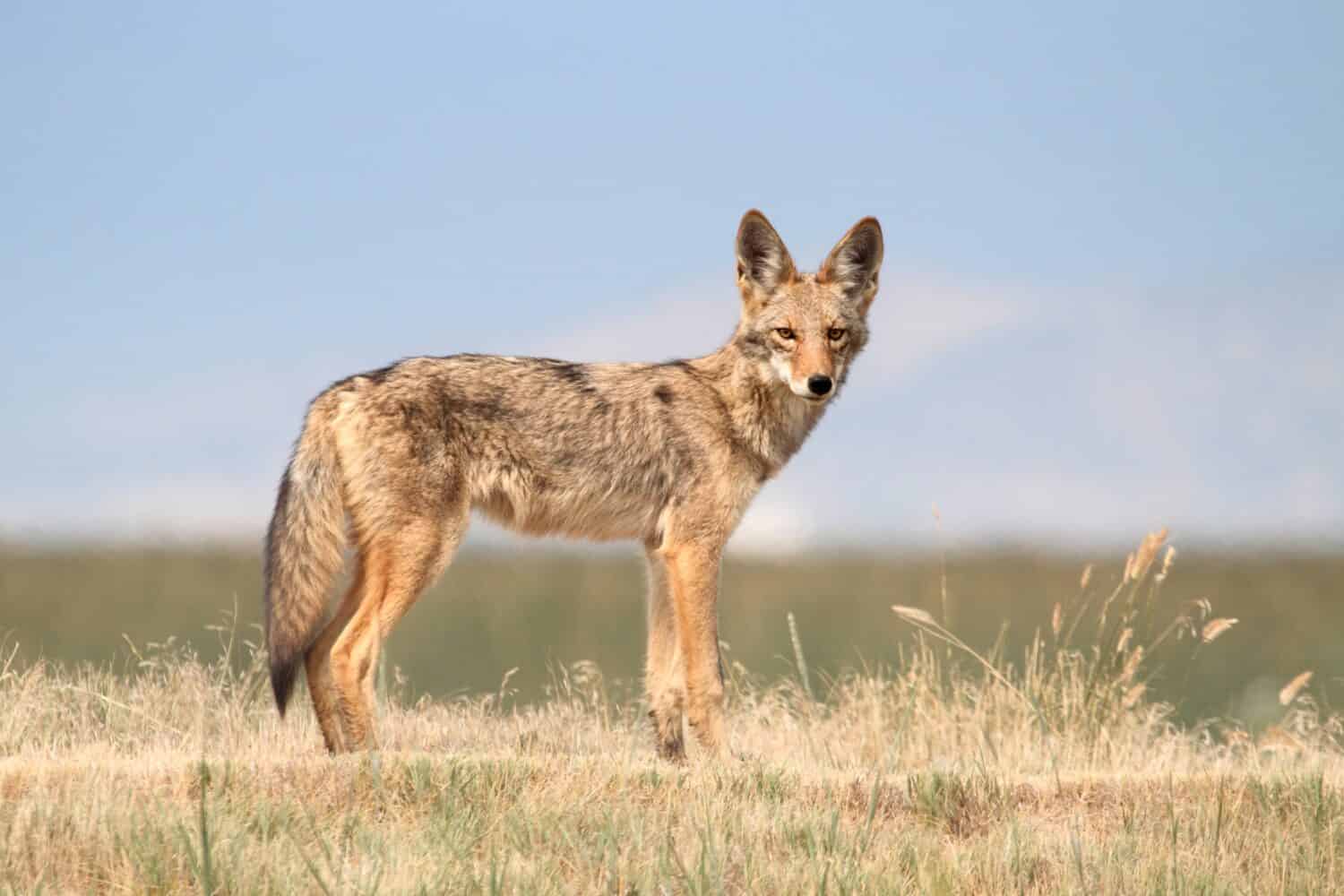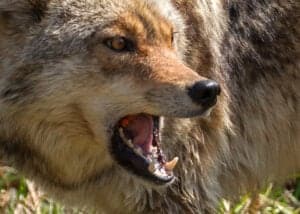The coyote (Canis latrans) is native to North America. Coyotes employ dens primarily as shelters for rearing their young. The den serves as a secure and secluded space where a breeding pair nurtures their pups. The selection of a den site is undertaken by the female. Once she has selected and prepared a site, she gives birth to a litter of pups within it. The den provides a protective environment during the vulnerable first weeks of the pups’ lives. Coyote litters typically range from four to seven, and both parents play active roles in caring for them. So, where do coyotes make their dens? Continue reading to discover five common locations where coyotes make their homes.

The den provides a protective environment during the vulnerable first weeks of a coyote pup’s life.
©Lynn_Bystrom/iStock via Getty Images
What is a Coyote?
Coyotes are members of the dog family (Canidae) and are closely related to wolves and domestic dogs. Though they prefer open areas, coyotes are highly adaptable animals and can be found in a variety of habitats, including forests, grasslands, deserts, and urban areas. Coyotes are rather small. They are much smaller than their cousin, the gray wolf. Coyotes have a pointed snout and large, erect ears. Their fur coat varies from gray and brown to reddish-brown, and their bushy tail often has a black tip. Coyotes have distinctive vocalizations, including yips, howls, and barks, which they use for communication.

Coyotes have a pointed snout and large, erect ears.
©Jillian Cooper/iStock via Getty Images
These carnivorous mammals have a diverse diet, feeding on smaller mammals, birds, fruits, and sometimes carrion, aka roadkill. Coyotes play a significant role in controlling rodent populations. While they are shy and avoid human contact, urbanization has led to increased interactions between humans and coyotes, with mixed results.
Social Behavior
Coyotes are social creatures that exhibit cooperative behavior across species. They will hunt with badgers and follow the sound of assembling birds in the hunt for food. They live in family groups in which everyone plays a role in rearing the young. Coyotes have multiple den sites within their territory, and they move their pups between these locations. This strategy is used to reduce the risk of predation. This behavior demonstrates the adaptability and resourcefulness of these intelligent creatures. Coyotes are crepuscular, meaning they are most active during dawn and dusk, but they can be active at any time of the day or night. When they are not actively rearing young, they do not nest in a regular location. Instead, coyotes will find a sheltered area, or dig a hole in which to rest.
Burrows
Coyote burrows are underground structures that serve as shelters, especially during the breeding season. These burrows are dug in well-drained soil and may have multiple entrances. Coyotes are proficient diggers and can create burrows themselves, although they will use existing burrows made by other animals such as badgers, groundhogs, or foxes. As mentioned, the construction of the den is the responsibility of the female, who selects the site and prepares it for giving birth. Coyote burrows can have a complex layout, with multiple chambers for the pups to rest in. The entrance is often narrow to deter larger predators and may have a slight mound of dirt outside. After the pups are weaned and able to travel, the family moves on to other locations within their territory, abandoning the burrow.
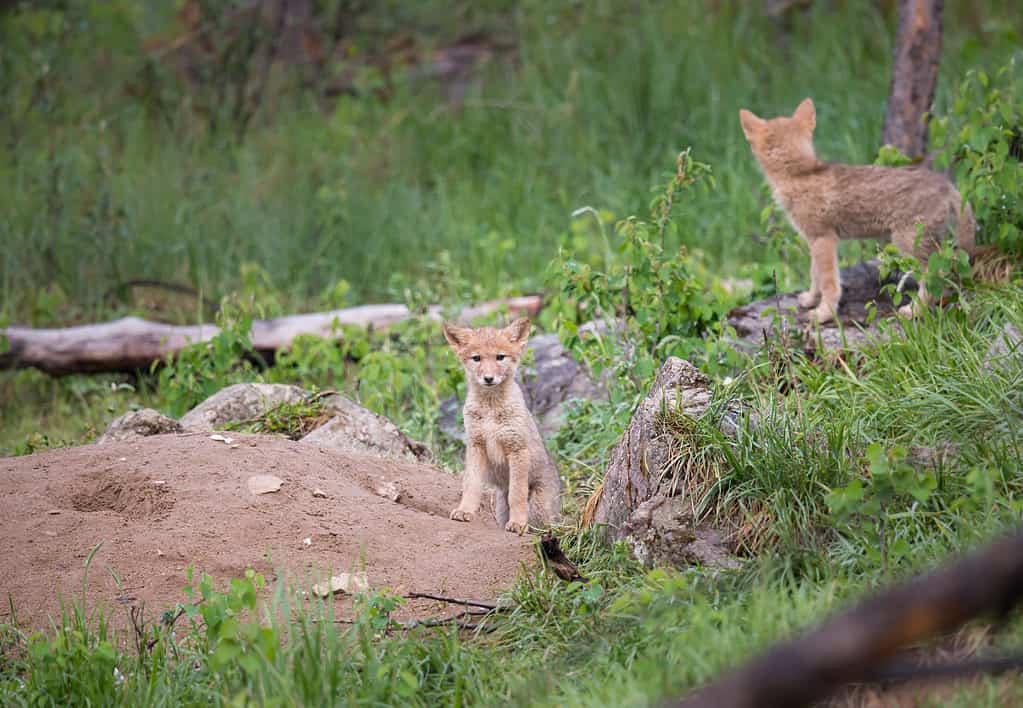
The entrance to a coyote burrow is often narrow to deter larger predators.
©Ghost Bear/Shutterstock.com
Hollow Logs
Hollow logs provide natural concealment, helping coyotes hide from potential predators and disturbances. The enclosed space of the log contributes to feelings of security and protection. The interior of a hollow log provides a relatively insulated and protected environment, offering shelter from rain, wind, and temperature extremes. A hollow log supplies a hidden and camouflaged space for resting and raising pups. Some hollow logs have multiple openings, allowing coyotes to have alternate escape routes and increasing the den’s safety. Coyotes are nomadic, and hollow logs are readily accessible.
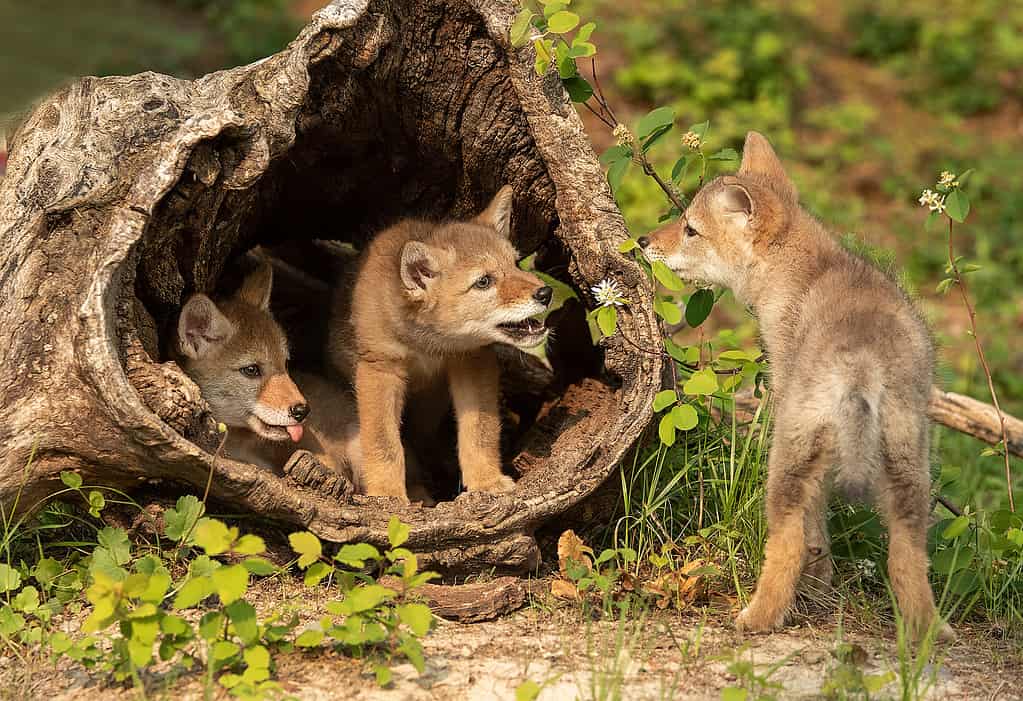
A hollow log allows provides a hidden and camouflaged space for resting and raising pups.
©Chris Desborough/Shutterstock.com
Rocky Outcroppings
Crevices and rocky formations provide natural concealment, making coyote pups less visible to potential predators. Rocky outcroppings offer protection from the elements, such as rain, wind, and extreme heat or cold. The rock formation acts as a natural barrier, providing insulation and cover. The irregularities in rocky outcroppings create multiple entrances and exits to the den. This feature allows for quick escape routes, minimizing vulnerability to predators. Rocky outcroppings are stable and durable structures for den sites. Unlike softer soils, the rocks offer a lasting and secure environment for raising pups and seeking refuge. The elevated position of some outcroppings provides a vantage point for observation.

Rocky outcroppings offer protection from the elements, such as rain, wind, and temperature extremes.
©Muriel Lasure/Shutterstock.com
Underbrush
Coyote dens constructed within the underbrush create a natural and camouflaged shelter. The den is strategically located within thick underbrush in wooded or brushy areas. Coyotes choose locations that offer a combination of concealment, protection, and proximity to essential resources like food and water. The den is ingeniously hidden among the dense vegetation of the underbrush. Tall grasses, shrubs, and foliage help obscure the entrances, providing a secret and protected space for the coyote family. A den of underbrush consists of a shallow depression in the ground, lined with leaves, twigs, and other natural materials to create a relatively comfortable interior.
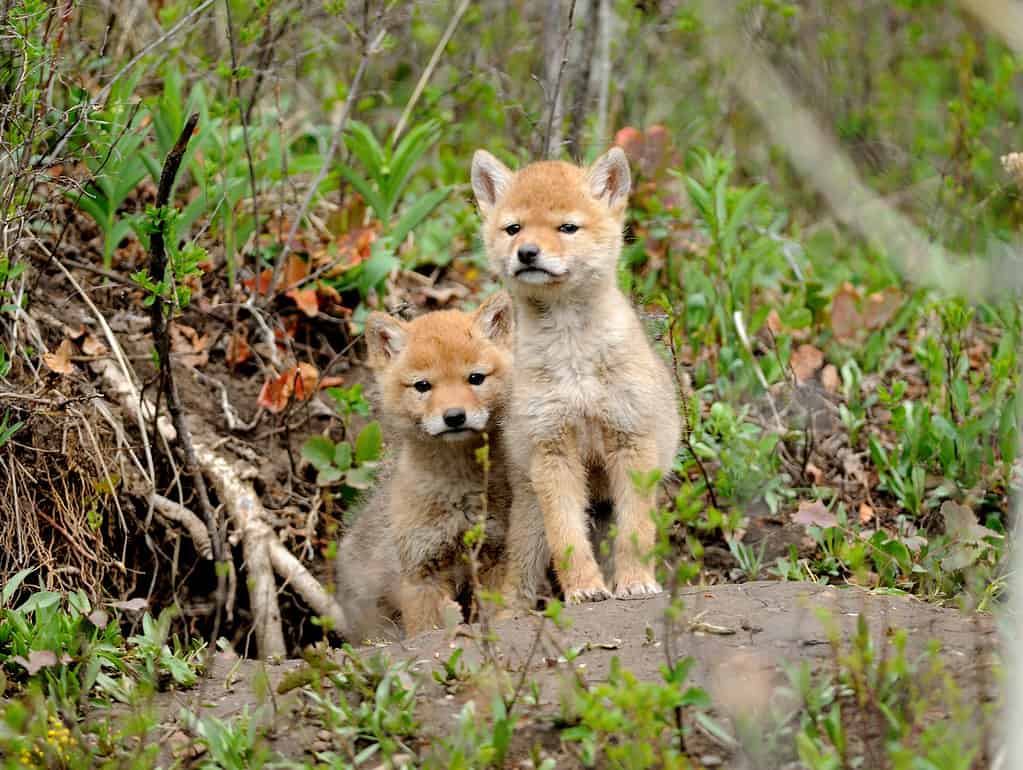
A den of underbrush consists of a shallow depression in the ground, lined with leaves and twigs.
©mlharing/iStock via Getty Images
Abandoned Buildings
In urban settings, coyotes display remarkable adaptability by utilizing vacant structures as dens. These structures, including abandoned buildings and under patio decks, provide coyotes with concealed and secure living spaces amidst a human-altered environment. The availability of such locations offers them protection from urban disturbances and potential predators. Coyotes choose these vacant structures for denning and resting, illustrating their ability to survive in urban landscapes.
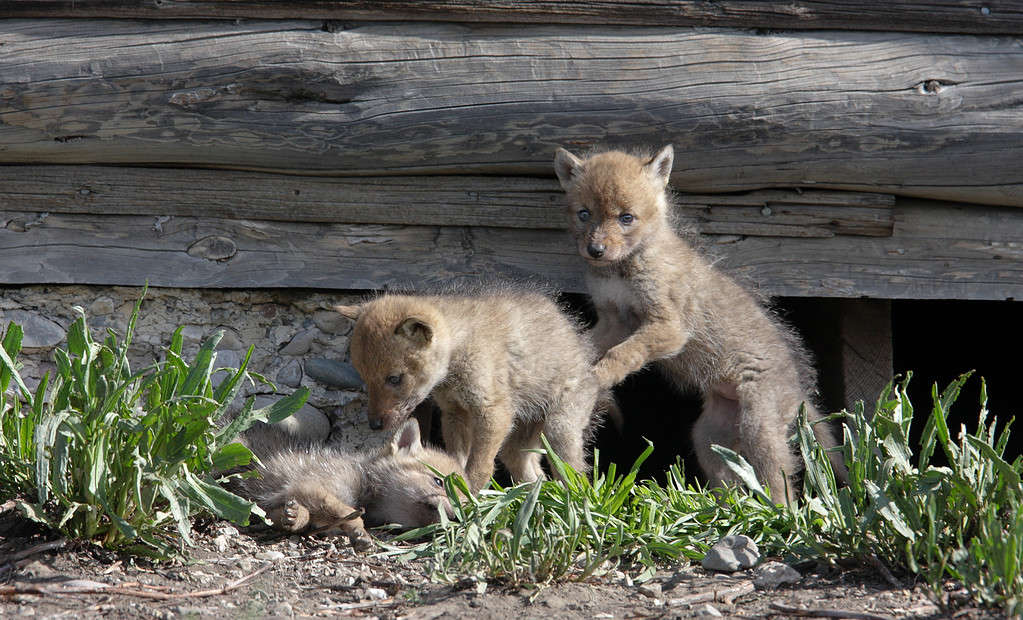
In urban settings, coyotes display remarkable adaptability by utilizing vacant structures as shelters.
©Ronnie Howard/Shutterstock.com
Thank you for reading! Have some feedback for us? Contact the AZ Animals editorial team.

